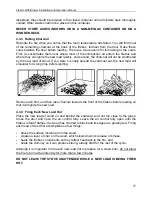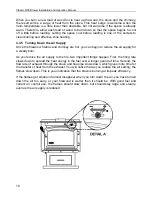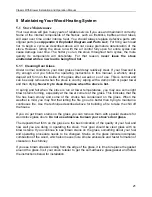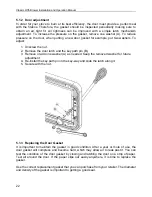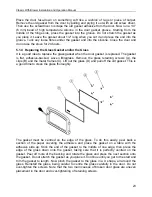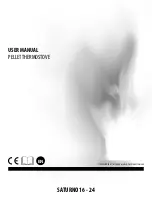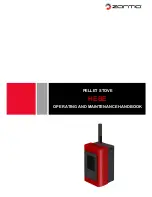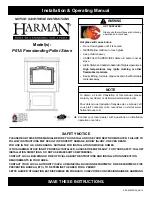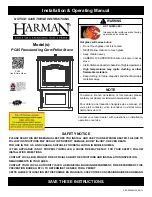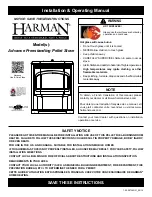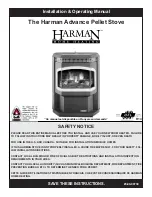
Classic With Blower Installation and Operation Manual
17
dispersed, they should be retained in the closed container until all cinders have thoroughly
cooled. Other waste shall not be placed in this container.
NEVER STORE ASHES INDOORS OR IN A NON-METALIC CONTAINER OR ON A
WOODEN DECK.
4.3.3 Raking
Charcoal
Rekindle the fire when you notice that the room temperature has fallen. You will find most
of the remaining charcoal at the back of the firebox, furthest from the door. Rake these
coals towards the door before loading. There are two reasons for this raking of the coals.
First, it concentrates them near where most of the combustion air enters the firebox and
where they can ignite the new load quickly, and second, the charcoal will not be smothered
by the new load of wood. If you were to simply spread the charcoal out, the new load will
smoulder for a long time before igniting.
Remove ash first, and then rake charcoal towards the front of the firebox before loading so
that it will ignite the new load.
4.3.4 Firing Each New Load Hot
Place the new load of wood on and behind the charcoal, and not too close to the glass.
Close the door and open the air control fully. Leave the air control fully open until the
firebox is full of flames, the wood has charred to black and its edges are glowing red. Firing
each load of wood hot accomplishes a few things:
•
drives the surface moisture from the wood,
•
creates a layer of char on the wood, which slows down its release of smoke,
•
heats the firebox components so they reflect heat back to the fire, and
•
heats the chimney so it can produce strong, steady draft for the rest of the cycle.
Although it is important to fire each new load hot to prepare for a clean burn, do not allow
the fire to burn at full intensity for more than a few minutes.
DO NOT LEAVE THE STOVE UNATTENDED WHILE A NEW LOAD IS BEING FIRED
HOT.















